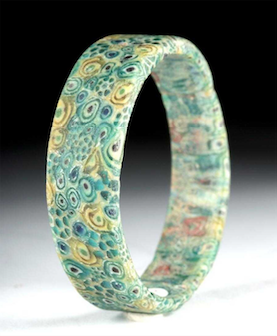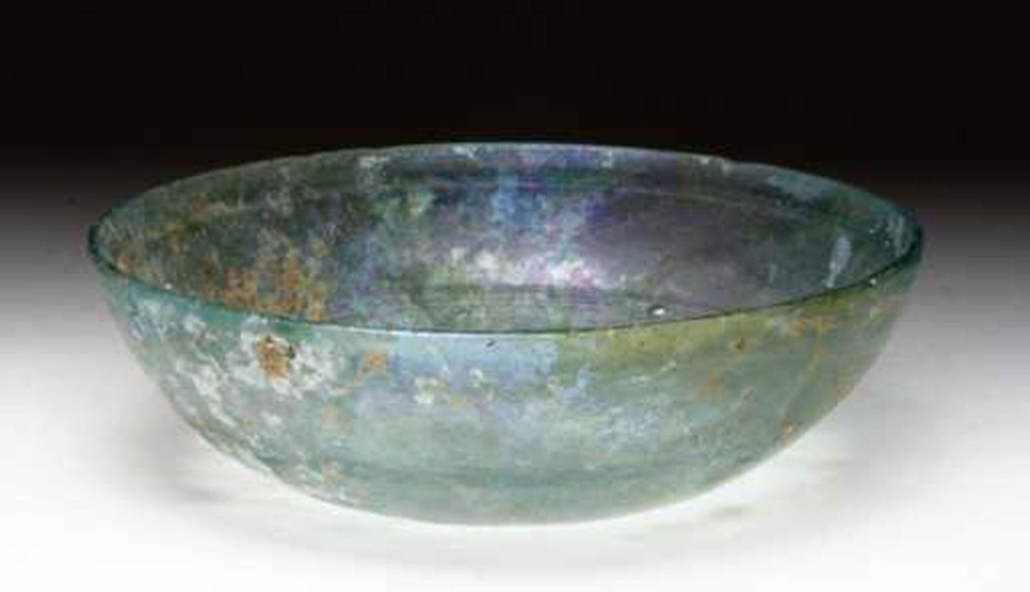
NEW YORK – Natural glass, created through lightening strikes and volcanic eruptions, has been known since ancient times. Manmade glass beads and amulets, however, first surfaced at Mesopotamian and Egyptian archeological sites. Yet Roman naturalist Pliny the Elder ascribes its legendary discovery to Phoenicia, millennia later. As the tale goes, seafarers come ashore, but finding no stones to support their cooking pots, propped them up on lumps of natrium-salt, taken from their cargo. As the natrium heated up and fused with sand on the beach, “streams of an unknown liquid flowed… this was the origin of glass.
In the 1st century AD, when glass production and trade had spread around the Mediterranean, Augustus, the first Roman Emperor, brought skilled glassworker slaves from Judaea, Syria, and Egypt to the Empire.
These master craftsmen not only carved gem-like glass cameos and created Hellenistic-style pieces through traditional techniques like core-and-rod, slumping, and casting. They also introduced the revolutionary art of free-blowing glass. Inflating gobs of molten glass with blowpipes, then working them while controlling their temperatures, produced smooth, thin-walled, bubble-like creations. This dynamic, minute-to-minute method inspired a variety of innovative shapes and styles.
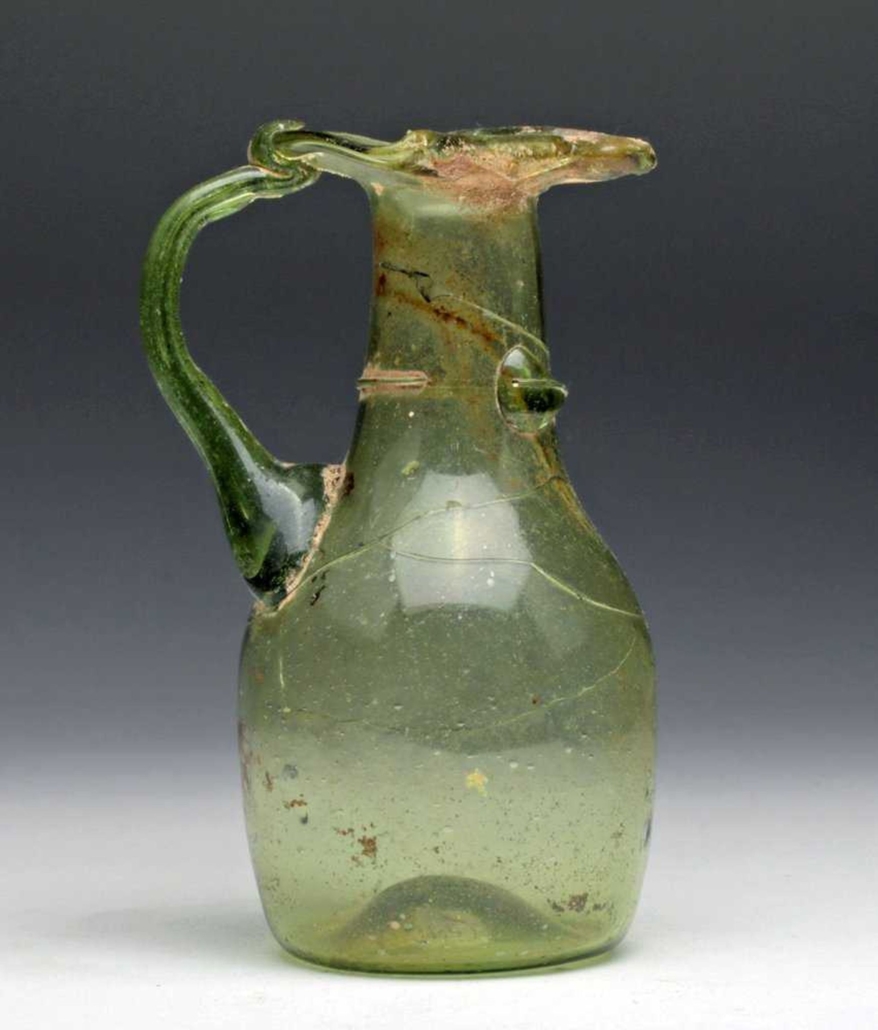
Mold-blowing, or enclosing inflated molten gobs in metal or wooden carved molds, followed. In other words, a mold’s form and texture, rather than glassworker skills, determined a product’s appearance. Three-dimensional pieces replicating dates and bunches of grapes, as well as some featuring patterns, inscriptions, or mythological motifs in high relief, were extremely popular.
Glassworkers also produced mold-blown amphorae and square, translucent bottles, valued for their fixed size, standardized volumes, and identifiable, impressed trademarks. Untold numbers, replacing pottery containers, transported Rome’s oil, wine, grain, and other perishable goods by land and sea.
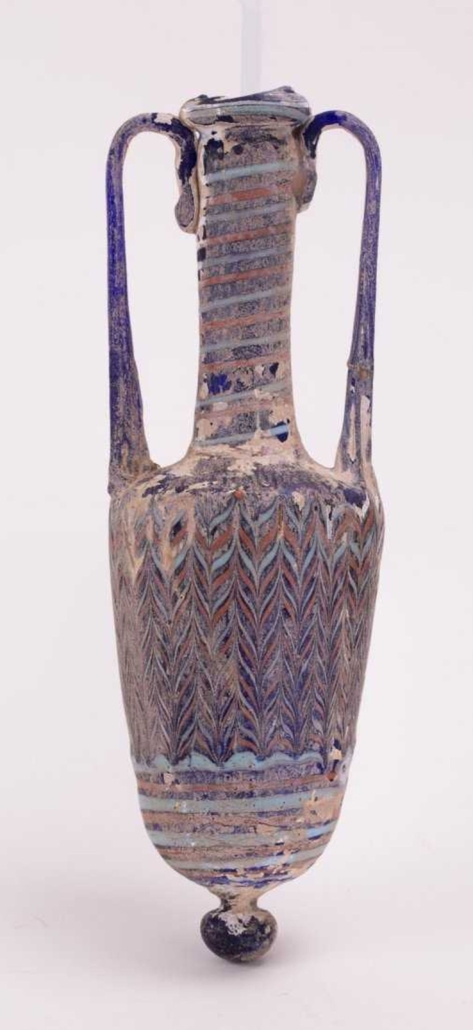
As glassmaking evolved, tastes changed. Vibrant cobalt blue and emerald green wares gave way to transparent, unadorned glassware in natural greenish-blue hues and fashionable colorless glass, prized for its resemblance to exceedingly costly rock crystal. Yet initially, only members of the Roman upper class could afford such luxuries.
By the following century, when millions of uniform, inexpensive glass items were produced and widely distributed, prices fell considerably. As a result, middle and lower classes — as well as slaves — lit glass oil lamps, sipped from glass beakers, washed their hands in glass finger bowls, and replaced their pottery bowls and dishes with non-porous, odor free glass tableware.
Women commonly kept their perfumes, scented oils, and herb-infused lotions in bulbous, sprinkler glass flasks or unguentaria. These elongated vials, which feature bell bottoms, thick walls, narrow necks, and flared rims, not only hindered evaporation but also dispensed their costly contents slowly, drop by drop. Moreover, if public bath patrons requested massages after their ablutions, attendants obliged, drizzling fragrant oils from globular glass flasks.
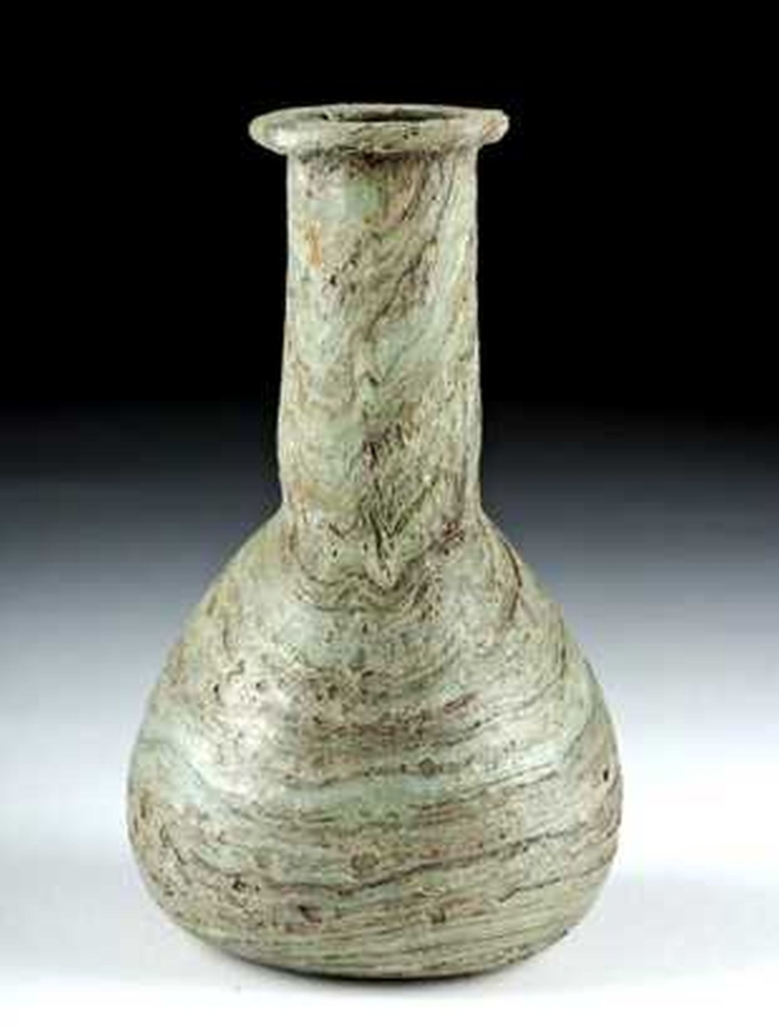
Romans appreciated glass not only for its practicality, but also for its beauty. Vases, for instance, might be marbled, swirled or, through the addition of mineral additives, replicate semi-precious stones. Bottles and pitchers might be smooth, textured, lathe-cut, or ornamented with delicate frilled glass trailings. Bowls might be ribbed, rimmed, molded, or fashioned from “millefiori” (thousand flowers) discs.
These mosaic-like pieces, created by patterning glass threads in hollow glass rods, then stretching, slicing, and fusing them together, also enhance plaques, rings, beads, bracelets, and brooches. These ancient pieces were so attractive, in fact, that master glassmakers in Murano, Italy, have recently revived the complex technique.
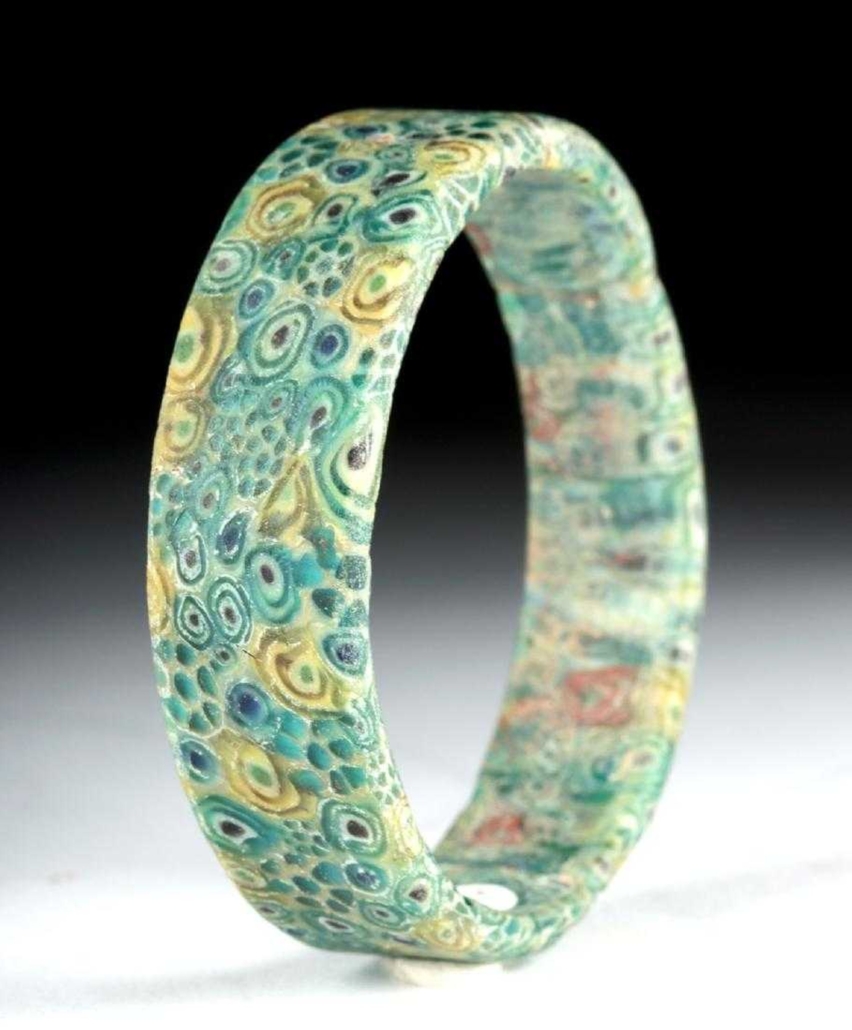
Because the Roman Empire produced more glass than any other previous civilization, archeologists are still unearthing discoveries at excavation sites and ancient glassworks from Spain to Afghanistan. Since the field remains dynamic, authentic, high-quality pieces are readily found on the market.
Perfectly preserved, naturally clean Roman glass vessels in rare shades that feature unusual ornamentation are most desirable of all. “As is” pieces, which reveal their original state of preservation, may also be appealing. Yet iridescent blue-green or rainbow-patinated Roman glass, created through centuries of weathering or exposure to mineral matter, are perennial favorites.
# # #


